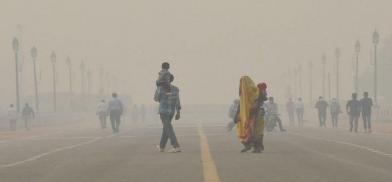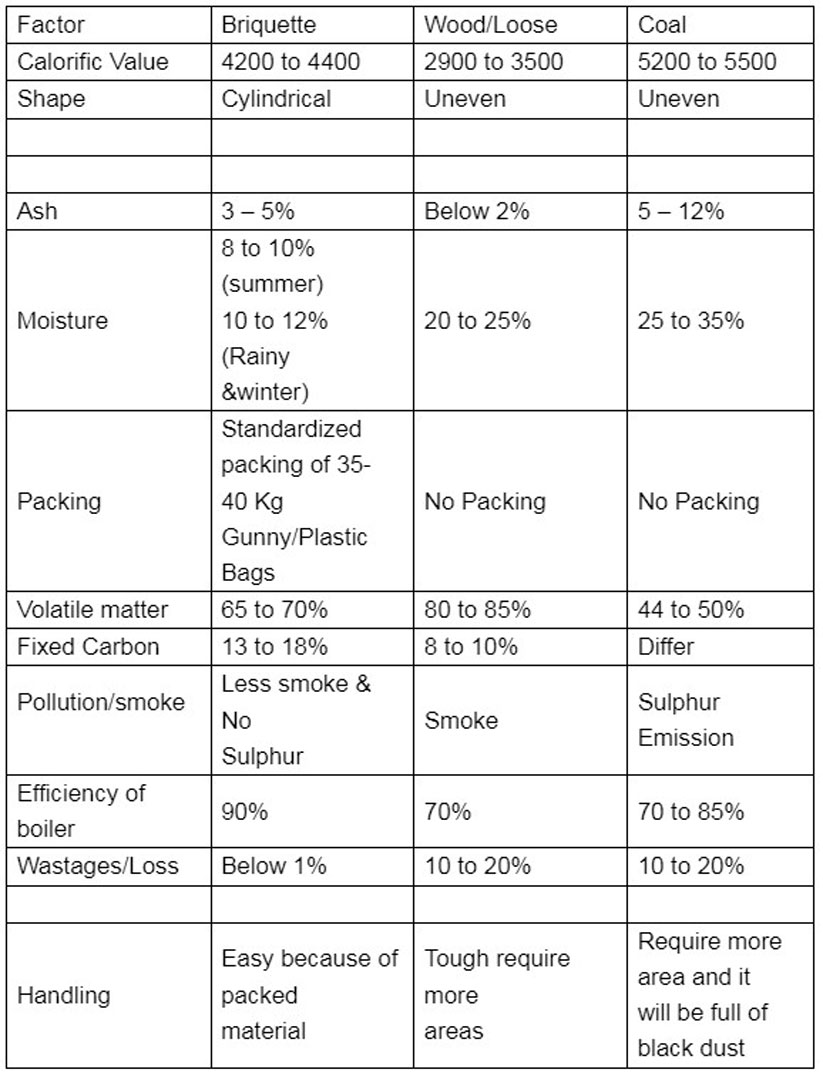Delhi's annual pollution blight: Is an end to stubble burning in northern India possible?
The power plants, cement and fertiliser units, and chemical industries have to be encouraged to utilize the paddy straw for the production of manure, briquettes and ethanol. These units could be provided the responsibility and authority of cutting the paddy straw from the fields after paying a nominal fee to the farmers. The arrangement could be a win-win situation for the paddy growers as well as user industries

Burning of paddy straw ( stubble) in the last quarter of every year in Punjab, Haryana, Uttar Pradesh and a few other states has been a recurring issue for the last several years, causing a high level of atmospheric pollution in northern India as well as in the capital city of New Delhi. As a result, New Delhi has gained notoriety as one of the most polluted cities in the world, which is a huge blot on India's image as a growing power.
A careful examination of the issues and possible solutions for solving this pollution-causing stubble-burning practice would highlight the fact that there is absolutely no justification for this problem. Obviously, the problem is there only due to a lack of forward planning and inefficient supply chain management.
It is reported that in Punjab alone, around 18 to 20 million tonnes of paddy straw is generated every year and around 15 million tonnes of paddy straw are burnt in open fields in a few weeks to clear the land for sowing wheat or other crops subsequently. Somewhat similar figures may be seen in Haryana as well.
Cosmetic measures won't work
There are plenty of things to be gained by avoiding the burning of stubble. Profit is one of them.
Instead of focusing on finding long-term solutions to solve the stubble burning issue, keeping in view the constraints and opportunities, only cosmetic measures have been adopted from time to time, when the pollution level would reach peak level due to stubble burning. Cosmetic steps are being announced such as odd-even schemes for cars, declaring holidays for schools, asking people to work from home, suggesting shift in crop patterns in the regions, attempting to get artificial rain, and so on. For example, the attempt to alleviate severe pollution by resorting to artificial rain or cloud seeding is an experimental endeavour, with no evidence so far that it would be successful in nonmonsoon months. Though cloud seeding has been attempted in several regions earlier, it has been proven to be an almost wasteful exercise.
These schemes are cosmetic and seem to have been introduced by the Delhi government to buy peace with the critics.
What are the solutions
The solutions are known but the problem has arisen due to a lack of initiative and dynamism in facilitating the implementation of the solutions by the governments. The solutions can be broadly categorized as given below.
Use of paddy straw as organic manure and use it for organic farming
Use of paddy straw to produce briquettes/pellets to be used as fuel
Use of paddy straw to produce ethanol by fermentation technology
Why stubble is burnt
The paddy straw in the fields have to be cut and removed and the fields have to be cleaned in about two to three weeks time, to allow for the planting of wheat or other crop subsequently. Cutting and removing the straw manually is costly and time-consuming and therefore, machines are required.
For collecting the paddy straw, governments have been providing subsidies to the farmers for the purchase of CRM machines, including surface super seeder machines, which are in-situ paddy stubble management devices. These machines uproot the crop residue. It is reported that Punjab has more than one million farming families who have land holdings of 2.5 acres or less, and these families cannot afford to buy these expensive machines.
These machines are available to farmers at a rent of around Rs.1800/- per acre. However, these machines are not available in adequate numbers considering the extent of paddy farmland. Small farmers feel that they cannot afford to spend so much money on rent for using the machinery.
Further, these agro machines are of no use for the entire year for the farmers and they are required only for a short period of a few weeks every year. Therefore, investment in buying these machines does not make economic sense for the farmers. Therefore, a large section of farmers in Punjab and other states are not using these machines and are simply burning out the paddy straw.
Organic manure much in need
With a high focus on promoting organic farming by the government, there is a large and unmet demand for organic manure in the country. Biomass can be converted into manure through a process called composting, which is a natural decomposing process, where biomass such as paddy straw is broken down by, microorganisms into a nutrient-rich compost / organic manure.
The question is why organic manure is not being produced on a large scale utilising the millions of tonnes of paddy straw that are readily available. Paddy straw is adequately available and organic manure is in demand. In such conditions, the inadequate supply chain management to produce manure and facilitate transportation to consumers Is clearly evident.
Huge demand for briquettes
Paddy straw can be used as fuel in brick kilns, power plants, cement units and industrial boilers, by converting paddy straw into pellets. / briquettes. Briquetting is the process of converting low bulk density agricultural material such as paddy straw into solid fuel (concentrated fuel briquette.) with high density.
Biomass briquettes are produced from crop residue (biomass) for use as fuel. Briquettes are formed in cylindrical logs using high mechanical pressure without the use of a chemical binder. Packing paddy straw into a briquette increases the bulk concentration of paddy straw, transportation cost is reduced and it is easy to store and transport.
Comparison of paddy straw as briquette fuel with fuel from other sources:

Such briquettes /pellets, provide much more heat, emit fewer than 50 per cent of the particulate matter and only a fraction of the ash from burning an equivalent amount of coal,
The price of briquette fuel produced from paddy straw may be in the region of Rs. 5800 to Rs.6500 per tonne, depending upon the regional demand-supply scenario.
The Ministry of New and Renewable Energy estimates about 270 million tonnes of such agricultural waste including paddy straw is annually available in India that can produce 28,000 MW of power. About 800 kg of paddy straw-based briquette can replace a tonne (1,000 kg) of coal.
The environment ministry announced a scheme to incentivise entrepreneurs to manufacture briquettes from paddy stubble. The power ministry in October 2021 decreed that all thermal power plants should ensure 5 per cent compliance by October 2022. However, India has been severely lagging in ensuring that at least 5 per cent of coal used in thermal plants is mixed with biomass, despite guidelines mandating them to do so. India’s thermal power plant operators are unable to comply with norms that require them to mix coal with a certain proportion of biomass, because of inadequate supply of briquettes.
In the period from April 2020 to March 21, only eight power plants had co-fired biomass pellets, and this number has risen to 39 now.
To put that number in perspective, India has around 180 thermal power plants. Apart from power plants, paddy straw briquettes can be used profitably in cement plants in kilns. Many cement units are eager to use briquettes as fuel due to several advantages but unable to do so due to the supply constraint of briquettes.
This points to inadequate supply chain management practice.
Use of paddy straw as feedstock
The government is now asking the industry to boost the production of ethanol, as the government is targeting to increase ethanol blending with petrol to the level of 25 per cent.
Several incentive measures have been announced to boost the production of ethanol. Due to the supply scarcity of ethanol, the Government of India has permitted even food grains such as rice, and maize to be used as feedstock for the production of ethanol.
To achieve the target of 20 percent blending by 2025, about 1,016 crore litres of ethanol would be required. About Rs 334 crores of ethanol would be required for another usage. It appears that the availability of ethanol blending with petrol would not be adequate
Obviously, paddy straw which is available in large quantities, should be used as feedstock for the production of ethanol.
Indian Institute of Science, Bangalore has devised a way to extract ethanol from paddy straw. It is claimed that 100 kg of paddy straw can produce 36 litres of ethanol, while wheat stalk of the same quantity can produce 53 litres.
The scientists have come out with a pre-treatment process that helps hydrolysis and fermentation. Making ethanol is essentially breaking down the poly sugar content in crop residue into simple sugar and then converting it into ethanol through fermentation. The scientists used marine cellulolytic bacteria for hydrolysis and fermentation was done with isolated yeast strains.
Though some steps have been taken to produce ethanol from biomass,
it is surprising that active steps have not been taken to use paddy straw for the production of ethanol.
What is the way out
Millions of tonnes of paddy straw are available in a short period of two or three weeks, which is now largely burnt. The solutions pointed out need to be implemented as fast as possible and with efficiency. Supply chain management is a crucial need.
The concerned states including Punjab, Haryana, and Uttar Pradesh should jointly promote an organization, with the object of facilitating the collection of paddy straw, use of paddy straw as manure, for use in agriculture, for conversion into briquette for use as fuel and for production of ethanol from paddy straw. There are no particular technology or investment issues in implementing such a solution.
Since the paddy straw is cut and removed in a short period of two to three weeks, adequate storage facilities are required for the paddy straw, Since it would be expensive to transport the paddy straw over a long distance, it is necessary to promote facility to use paddy straw for the production of organic manure, briquettes and ethanol at a proximate distance to the paddy farm area.
The power plants, cement and fertiliser units, and chemical industries have to be encouraged to utilize the paddy straw for the production of manure, briquettes and ethanol. These units could be provided the responsibility and authority of cutting the paddy straw from the fields after paying a nominal fee to the farmers. The arrangement could be a win-win situation for the paddy growers as well as user industries
Delhi and nearby regions would be saved from the pollution hazard. The governments of Punjab, Haryana and Uttar Pradesh have a crucial role to play in coordinating the activities in ensuring optimum supply chain management practices for paddy stubble.
One would hope that by the last quarter of the year 2024, the stubble-burning issue would no longer remain a recurrent issue. The ball is clearly in the court of the state and central governments.
(The author is a commentator on current affairs and public issues and a Trustee, NGO Nandini Voice for the Deprived, Chennai. Views are personal. He can be contacted at nsvenkatchennai@gmail.com)
casino en ligne
Fine stuff Kudos.
casino en ligne France
Awesome info, Cheers.
casino en ligne France
You said this well.
meilleur casino en ligne
Amazing quite a lot of fantastic facts!
casino en ligne
Regards. Excellent stuff!
casino en ligne
Incredible lots of superb information!
casino en ligne
Great facts. Thanks.
casino en ligne
Thanks a lot! Great stuff.
casino en ligne
You expressed that exceptionally well.
casino en ligne










Post a Comment